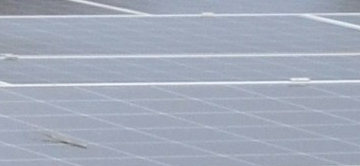With the deployment of wind and solar installations, electrical power generation becomes more variable with circadian and seasonal cycles, cloud cover, and wind patterns. Smoothing the supply of green energy through storage is becoming a necessity. So not only must we make progress in energy storage technologies, but we must also create a regulatory framework that provides incentives for storage.
Definitions
As long as electricity demand is not able to adapt to fluctuations in supply, real-time balancing of the grid will require a high degree of supply flexibility, including the storage/release of electrical energy produced by the sun and wind. In the power system, energy storage means "deferring the final use of electricity to a moment later than when it was generated, or the conversion of electrical energy into a form of energy which can be stored, the storing of such energy, and the subsequent reconversion of such energy into electrical energy or use as another energy carrier.” (Article 2-59 of the EU Directive 2019/944).
The definition is very broad, apparently not excluding any technology, actor or use of stored energy. But depending on the level of public support that will be granted for storage, one can expect more or less heated discussions between the different stakeholders in the industry. For example, should the hot water tanks functioning within 11 million households in France be considered as storage equipment? Yes, since they are electric storage water heaters that can be programmed to heat water at off-peak times for use at any time. No, because off-peak hours are essentially nocturnal and therefore it is not the photovoltaic panels that are used to power the accumulators, even though European regulations explicitly aim to strengthen the integration of electricity produced from renewable sources. Thus, according to the Ofgem, if the thermal energy is not reconverted into electricity before use, it is not considered as storage. As for electric vehicles, they are presented as means of decentralized storage, but depending on the times of battery recharging and the places where they are connected, their role can be beneficial or detrimental to the electrical system; they are therefore to be encouraged or discouraged depending on their temporal and spatial use.
As far as industrial-sized facilities are concerned, for the time being most of the storage is done in pumping energy transfer stations. But this is changing, the USA plan to increase the installed storage capacity from 1.2 gigawatts in 2020 to 7.5 gigawatts in 2025 with lithium-ion super-batteries, which costs have fallen sharply thanks to the take-off of electric vehicle sales. However, these installations can only be used at full power for periods of around 4 hours. They will therefore not solve the problems posed by seasonal fluctuations in the production of electricity from renewable resources.
Storage and grid
Not everyone is allowed to get into the storage business. According to articles 36 and 54 of the EU Directive 2019/944, distribution and transmission grid operators may not own, develop, manage or operate energy storage facilities ... unless no third party is prepared to invest in facilities necessary for the performance of the tasks of the distributor or the transmission operator, and provided that the grid operator does not use these facilities for arbitrage on the electricity markets. Why is the operator of a distribution or transmission system allowed to own storage facilities only to ensure system security? Why can't it buy or sell electricity in the markets? There are two reasons: one is to avoid cross-subsidization between energy storage and regulated distribution or transmission functions. The second is the risk of the infrastructure manager using his position as network controller to bias the access of other operators and thus ensure that his own facilities make abusive profits on the electricity market.
Indeed, a power grid is a natural monopoly since its duplication is more expensive than a single installation, but it is also an "essential facility" since, in the current state of technical knowledge, electricity producers must use the grid to supply their customers. These are two good reasons why distribution and transmission are regulated activities, with quality of service levels and user tariffs set by a public administration, in France the CRE. On the other hand, storage is a competitive economic activity ... or at least should become so as the cost of batteries falls. Therefore, just as electricity distributors and transporters controlled by the sector regulator are not allowed to produce energy, they are not allowed to store it for sale on the wholesale or retail markets, activities that are supervised by the competition authorities.
The aforementioned Directive even stipulates that the regulatory authorities must organize at least every five years a public consultation on existing energy storage facilities in order to assess the potential availability and interest in investing in these facilities. If the public consultation shows that third parties are in a position to own and profitably operate the facilities, the regulatory authority shall require the system operator concerned to phase out its activity in this area within 18 months, possibly in return for compensation to recover the residual value of the investments made.
Storage and market
In addition to network balancing operations for which a specific remuneration can be set by the regulator, storage facilities make it possible to make profits on the marketplaces by buying when the price is low and selling when the price is high. Since network operators are excluded from these commercial transactions, potential candidates are all other players in the electricity industry (producers, marketers, aggregators, consumers), but also equipment manufacturers, not forgetting manufacturers of electric vehicles (see our June 2, 2020 article). The question of whether to go through the creation of an ad hoc status of storage operator remains open (CRE).
In order to access the marketplaces, storage facility operators need of course a physical connection, but also an authorization. In the U.S., it took several years of legal battles and an order from the Court of Appeals for the District of Columbia ruling in favor of the federal regulator (FERC) to allow operators of storage facilities located in a distribution network or behind a retail meter to participate directly in wholesale markets when they were barred from access by state regulators.
Wholesale markets are known to operate by ranking supply and demand in "X merit order" and setting an equilibrium price for each hourly or bi-hourly slot. The insertion of auctions submitted by storage facility operators should be done according to the same principles, knowing of course that a facility can at any time present itself as a buyer if the price is low and a seller if it is high, thus intervening on both sides of the market. This insertion involves the dynamic calculation of the value of the energy contained in the "reservoir" and the comparison of this internal value with the market price, taking into account the losses caused by the double transformation of the electrical energy. There remains the thorny question of the risks of price manipulation by large storage operators and large energy producers or consumers. The interest of prohibiting or authorizing vertical integration between producers and storage operators or between consumers and storage operators depends on the configuration of the network since, depending on the degree of congestion of the lines, the same capacity for injecting or withdrawing electricity can have different effects on the balance of the markets.
*
* *
The growth of the electricity storage industry, driven by the development of renewable energies, will require a clear division of tasks between regulatory bodies. It won’t be easy to distinguish between installations entirely devoted to network security, therefore under the control of the sector regulator, and those used to participate in the markets, therefore supervised by the competition authorities. Many economic players are interested in this activity, since the call for contributions on battery-based electricity storage launched by CRE in early 2019 attracted nearly 50 responses. The use of the "regulatory sandbox" system provides an opportunity to encourage the emergence of new ideas to effectively frame the innovations proposed by interested parties.





